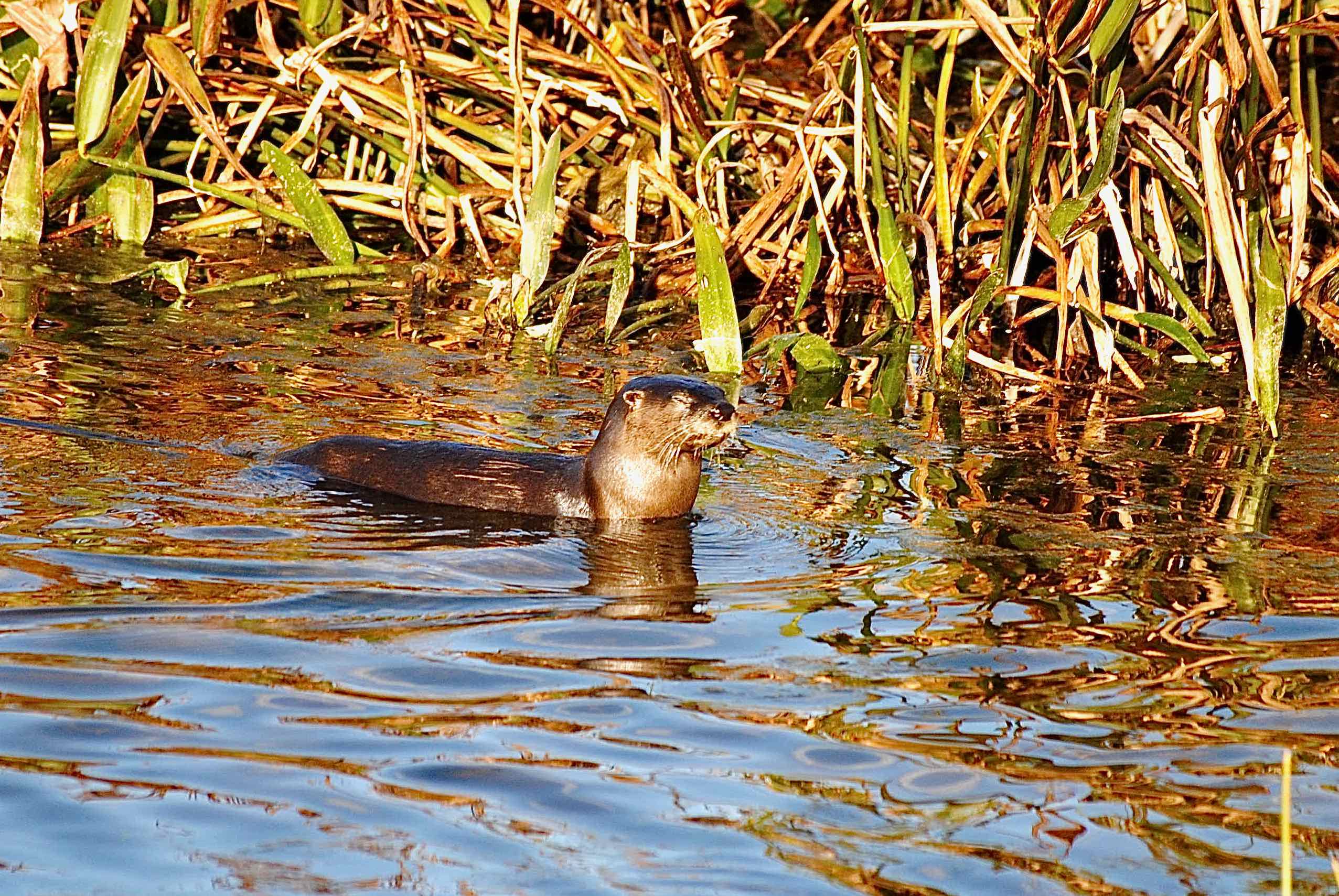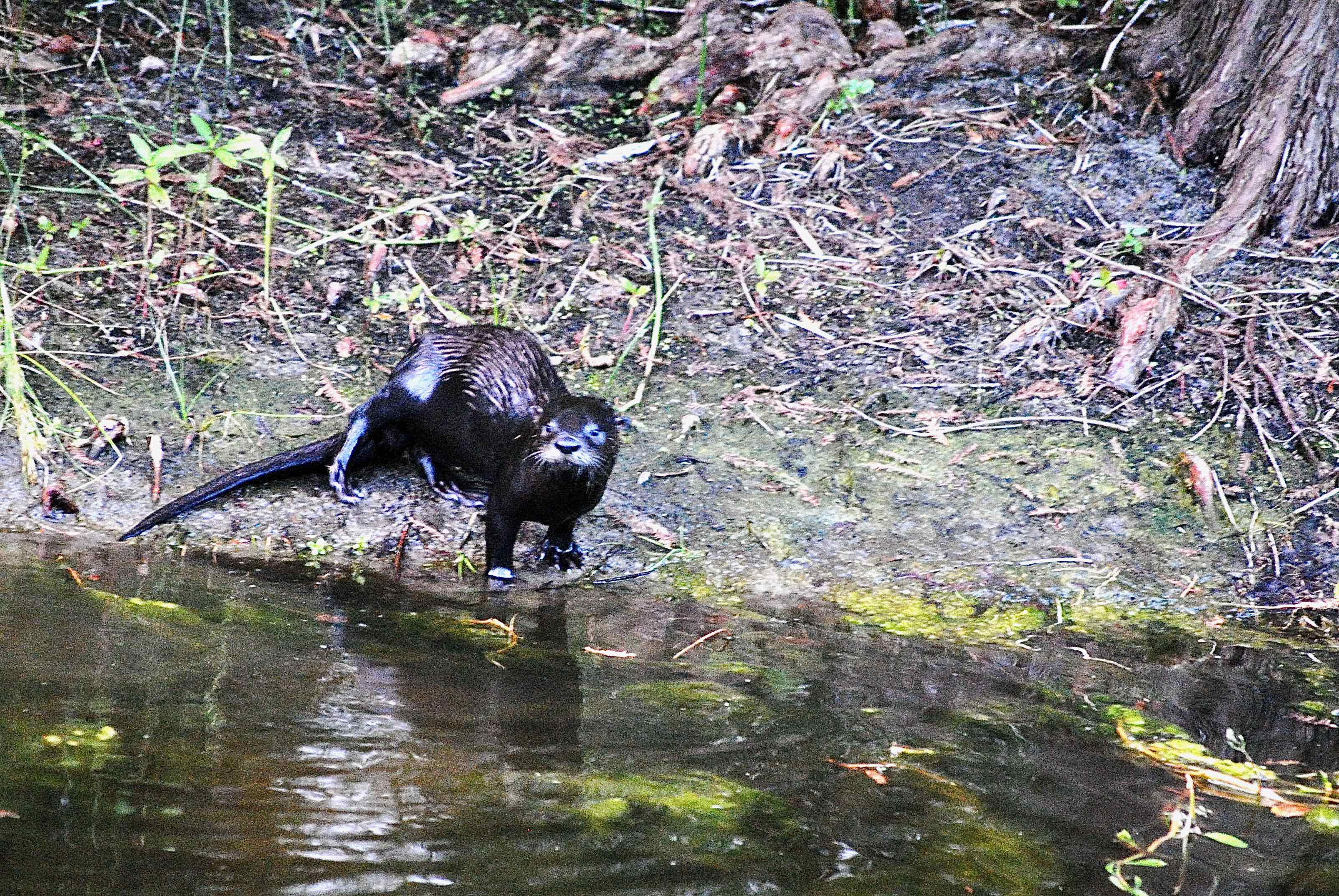
River Otter, photographed at Peaceful Waters Preserve, Wellington, Palm Beach County, in January 2018.
Playful is probably the word most associated with the river otter, Lontra canadensis. But there is another word that describes this animal: fierce.
Despite the cute and cuddly appearance and seemingly funloving demeanor, river otters are apex predators. They are capable of taking on the biggest and baddest animal Florida can throw at them — an adult alligator — and come out on top.
They are fun to watch, of course. And there are plenty of them in the wilds of Florida. They're found in every part of the state except the Keys. But you wouldn't want to try and pet one, even if one were to let you get close enough to try.
River otters are found in every North American habitat except desert. The two things they require to thrive: quality water and abundant food.
River otters are built for wet places. They've got long bodies that glide through the water, powerful tails, short legs and webbed toes, all the better for swimming, which of course is their main mode of transportation. Their eyes are equipped with clear lids that allow them to see underwater, and lungs that allow them to hold their breath for as long as eight minutes. On dry land, they can hit 18 mph.
Their furs are lush and waterproof, either gray and white or brown and black. They can approach four feet in length, males bigger than females, and they can weigh as much as 30 pounds. Their heads are on the flat side and equipped with oversized ears. The mainstay of their diet is fish but they will eat whatever is most abundant and easiest to catch, including crayfish and mollusks, insects, rodents, frogs and turtles.
River otters were once a staple of the French fur trade in North America; in fact they were hunted and trapped to the point of extinction in at least 20 states before conservation measures were put in place to restore and protect the populaton. Pollution and urbanization also took their toll as the 19th century gave way to the 20th.
As many as 21 states are working to reintroduce river otter populations, many in the Rocky Mountain region. River otters remain protected in five states, and the United States Forest Service lists them as a sensitve species. As far as we can tell, their population in Florida is secure, but spotting them can be difficult — river otters tend to be most active at night, and they tend to shy away from humans.
They are social animals, often appearing as families or as collections of single males. However, we've spotted them only as individuals. Most of the photos on this page were taken at Green Cay Nature Center in Boynton Beach at three different times over a period of years. We've also seen them in the tidal basin at Frenchman's Forest Natural Area in northern Palm Beach County and out west in Wellington's Peaceful Waters Preserve.
While they look warm and cuddly, they are top line predators, capable of taking on the occasional alligator, as reported by National Geographic.
They are far more likely to avoid humans than confront them but they are not animals to be messed with. The biting force of their jaws is comparable to a German shepherd.
Mating season is December to April. Gestation period is about two months, although birth can be delayed for as long as a year after mating, because implantation of the embryo within the uterus can be delayed in otters. The typical litter consisting of two or three offspring, which are born blind. Mom begins swimming lessons soon after giving birth. They open their eyes at a month, are weaned at three months and strike out on their own at six months. They mature at two or three years. In the wild, a river otter might reach a 14th birthday, though eight or nine is more typical; in captivity, a 25th birthday might be reached..
Although the large-scale, unregulated trapping that nearly killed them off is a thing of the past, river otters still face several threats, including illegal hunting, the potential effects of global warming on their food supply and loss of habitat.
River otters are members of Mustelidae, family of mammals that includes weasels, minks, badgers and ferrets.



